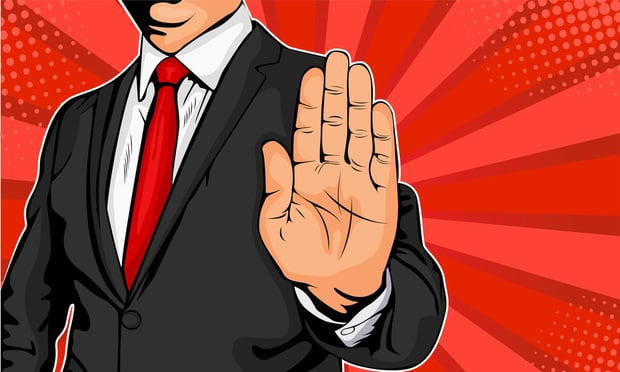The recent problems surrounding Chinese drywall have been compared to everything from a silent hurricane to the next asbestos. But how do the costs really compare to a hurricane?
 Are we more likely to see the quick settlement of claims typical of property damage from hurricanes, or the long reporting lags and hard-fought legal battles typical of asbestos claims?
Are we more likely to see the quick settlement of claims typical of property damage from hurricanes, or the long reporting lags and hard-fought legal battles typical of asbestos claims?
Based on publicly available information and experience in estimating past construction-related torts, we estimate total economic losses could fall in the $15 billion to $25 billion range–numbers that rival some hurricanes but fall far short of the price tag for asbestos.
Who will ultimately pay for the claims?
The share of the total that will fall to property and casualty insurers remains unclear. Early analysis suggests that potential defendants will face a host of coverage issues, and some have large self-insured retentions which will limit recovery from commercial insurers.
But asbestos, construction defect and even hurricane scenarios have already taught private insurers how wrong initial thinking on insured damages can be, underscoring the need for careful monitoring of claims experience as the drywall cases unfold.
INITIAL COST ESTIMATES
It has been widely reported that more than 500 million pounds of Chinese drywall was imported from China between the years 2004 and 2007 and installed in approximately 100,000 homes nationwide. The Consumer Product Safety Commission (CPSC) has now recorded 608 reports of defective Chinese drywall in 21 states.
The most frequently cited issue is the smell of rotten eggs emanating from the drywall. Property damage claims include the failure of air conditioning units and corrosion of copper piping/coils, electrical wires and personal property such as furniture, fixtures and jewelry.
Bodily injury claims allege respiratory problems, persistent cough, bloody noses, recurrent headaches, sinus infections, asthma attacks and fatigue.
The costs of the defective Chinese drywall can be separated into five categories: indemnity related to repairing the house, bodily injury from any health effects of the gases being emitted, plaintiffs' lawyers fees, defense lawyers fees and indirect costs.
Of these, the costs of home repair are the most straightforward.
Randy Noel, representing the National Association of Home Builders, recently testified before Congress that the cost of remediation may range from one-third of the home's value to $100,000. While fewer than 100,000 houses may need remediation in their entirety, the full number of homes containing Chinese drywall can be used to estimate an upper boundary of the potential cost.

According to the NAHB, the countrywide median value of new homes sold between 2004 and 2007 was approximately $240,000. At one-third of the home value, the 100,000 homes with Chinese drywall would cost approximately $8 billion to repair. The cost estimate of $100,000 per home yields an even higher gross estimate of $10 billion.
Bodily injury costs are more elusive at the moment. Chinese drywall claims may have a similar fate as mold claims a decade ago–the causal link between defective drywall and adverse health effects may be difficult to establish. A lot will depend on the outcome of the testing by the CPSC.
As we've seen with asbestos, any health findings established by a professional or government organization can have a dramatic effect on the outcome of bodily injury lawsuits. If the CPSC concludes that defective Chinese drywall poses a health problem, a significant number of bodily injury claims may follow.
Even without official health findings, a homeowner with the right lawyer in the right venue could get a big settlement. Louisiana, where much of the defect drywall was installed and where several cases have been transferred, is known as a plaintiff-friendly venue. Judges and juries might be even more sympathetic to plaintiffs hit by this "silent hurricane"–particularly plaintiffs who were already displaced by Hurricane Katrina.
As for legal fees, we know from other construction defect experience that they can be substantial, representing on average 40-to-50 percent of the total claim cost.
Costs for Chinese drywall claims will vary depending on whether the claims are filed separately or as class-action claims. These legal fees will be significantly reduced if the construction project was covered by a wrap-up policy.
Nevertheless, it is likely homebuilders, and perhaps their insurers, will have to expend a considerable amount on legal expenses. To make matters worse, legislation proposed in the Louisiana Senate would allow homeowners to sue not only for damages but also to recover attorney fees.
Indirect costs are composed of loss of use and potential diminution of home value. The indirect cost of the loss of use of the home will likely be borne by the party that is found liable for the property damage. The diminution of home value is not allowed in most states as a valid claim in a lawsuit, therefore it is likely that diminution will be borne by the homeowners.
Our experience with tallying past claims relating to construction defects suggests that legal fees could pile on $5-to-$10 billion more of cost associated with Chinese drywall, with any bodily injury and indirect costs adding even more.
If we include the potential bodily injury damages and indirect costs, a rough estimate of the total costs for the defective Chinese drywall could be somewhere around $15-to-$25 billion. While this is a far cry from the $81 billion of damage done by Katrina, according to the National Hurricane Center, it is well within comparison of the top 10 most expensive hurricanes in history.
LATENCY & LIABILITY
Consider the comparison to asbestos.
Asbestos is unique among the mass torts for the propensity for case law to morph and evolve over many decades. By contrast, most mass torts are characterized by a growing number of claims, followed by a few landmark settlements that guide the conclusion of the remaining cases.
In this respect, we are more likely to see Chinese drywall follow the more traditional mass tort pattern. Once we see precedents set for decisions on insurance coverage questions, such as "your work" exclusions and pollution exclusions, we are likely to see a more rapid conclusion to the Chinese drywall litigation.
While it is too early to fully understand the latency, it appears that health complaints arise quickly after the onset of the odor. For southern states, this means we may already be seeing a large number of bodily injury complaints. But in northern states, where less humidity may affect the speed of the off-gassing process, there may be a longer lag in the reporting of bodily injury claims.
The severity of health problems is still up in the air (literally), but most claimants can already point to the effects of Chinese drywall on their physical comfort, if nothing else. Additionally, there are already tests being run on the health effects of Chinese drywall, whereas with asbestos, several decades of exposure passed before comparable health tests were run.

As legal battles play out, who will end up paying for the billions of dollars of loss?
We are beginning to see the flood of claims, particularly in Florida and Louisiana. Most of these claims are against a variety of suppliers, drywall installers and homebuilders, in addition to a couple of manufacturers.
o Manufacturers. Unfortunately for homeowners and builders, the manufacturers of the faulty drywall are foreign companies and it has yet to be seen how they will be held accountable for their defective product. Precedent in other claims against Chinese companies for defective products suggests there is little chance of recovering damages.
o Suppliers. The supplier is not covered under most construction wrap-up policies and will, therefore, stand alone in a lawsuit.
In tendering claims to commercial general liability insurers under individual policies, they may face definitional issues. For instance, if drywall gives off unpleasant odors, that fact may not by itself establish property damage. However, the claimants allege that the off-gassing of sulfur compounds corrodes soft metals in the homes, which does qualify as property damage.
Suppliers must also reckon with the policy's pollution exclusion. State law varies on whether indoor pollution events (as opposed to industrial pollution) are within the reach of the exclusion.
o Homebuilders. Homebuilders in recent years have been taking larger and larger portions of their risk, which could leave them with substantial exposure to paying claims before satisfying per-occurrence or even aggregate retentions.
Additionally, recovery from insurance depends on the outcome of coverage questions surrounding pollution and "your work" exclusions.
o General contractors. Contractors still in business may have some exposure to the claims. In fact, since general contractors tend to have well-developed insurance programs in comparison to subcontractors, they may find themselves the targets of lawsuits as plaintiffs' attorneys seek out deep pockets. They are subject to some of the same policy restrictions as homebuilders.
o Subcontractors. In the building frenzy after hurricanes, not all subcontractors were licensed and some have gone out of business. Those with sufficient claims-made insurance coverage may not only find themselves with some direct exposure, but their general contractors or builders may seek to tap into their coverage under additional insured status.
In the end, the homeowners will be left absorbing any costs they are not able to recoup from other parties. Insurers have already denied coverage under the homeowner policy, citing the pollution exclusion, according to Florida press reports.
It may take years to determine who will pay for these costs, with non-wrap and claims-made policies creating additional complexities. Insurers and self-insureds will need to continuously monitor their exposures. (See accompanying sidebar on "Lessons Learned.")
The construction economy will also affect the outcome. If small builders, subcontractors and suppliers cannot weather the current and future stormy times, they may not have insurance policies to respond or the ability to pay their self-insured liabilities.
Our collective ability to predict the ultimate costs of defective Chinese drywall is limited until various industry and legislative studies are completed and courts make some preliminary rulings. However, as with any construction defect problem, we should be able to create some scenarios by sensitivity-testing frequency, severity, reporting patterns and payment patterns.
As insurance professionals, we should examine our company's exposures by looking at the risks we insured or self-insured. We should make sure management understands potential exposure issues and is not caught unawares.
Rachel Boles ([email protected]) is a Towers Perrin consultant in San Francisco, and Ronald Kozlowski ([email protected]) is a Towers Perrin principal in Hong Kong. Both are Fellows of the Casualty Actuarial Society.
Want to continue reading?
Become a Free PropertyCasualty360 Digital Reader
Your access to unlimited PropertyCasualty360 content isn’t changing.
Once you are an ALM digital member, you’ll receive:
- Breaking insurance news and analysis, on-site and via our newsletters and custom alerts
- Weekly Insurance Speak podcast featuring exclusive interviews with industry leaders
- Educational webcasts, white papers, and ebooks from industry thought leaders
- Critical converage of the employee benefits and financial advisory markets on our other ALM sites, BenefitsPRO and ThinkAdvisor
Already have an account? Sign In Now
© 2024 ALM Global, LLC, All Rights Reserved. Request academic re-use from www.copyright.com. All other uses, submit a request to [email protected]. For more information visit Asset & Logo Licensing.








